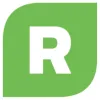Take a look inside 1 video | 7 images
Reflex
Pros: Fun characters, game-based drills, and the point system make gaining fluency more fun than worksheets.
Cons: Helps only with memorization and quick recall, not pattern recognition, grouping, or deep understanding of numerical relationships.
Bottom Line: Simple games with some supports focus on fluency but don't go beyond drills.
ExploreLearning Reflex is best used in situations where students already have strong conceptual understanding of operations, number patterns, and grouping strategies but could use a bit of extra support on quick recall (primarily for high-stakes testing purposes). It shouldn't be any part of regular classroom practice, reserved instead for extra support.
It's most effective if used regularly for shorter periods of time (15 minutes at most), so that it doesn't feel tedious. It could work well as one station, where the others focus on deeper understanding. It could also be a good way for kids to get a sense of which math facts give them trouble. Teachers can have students pay attention to the problems they get incorrect and then have kids examine their own process: Did they get flustered? Is division or multiplication harder to do under pressure? Kids can work on Reflex at home or in school. They can track their growth using the Progress Tree, and parents and teachers can view individual reports showing usage and fluency gained.
ExploreLearning Reflex provides math fact drills for addition and subtraction for numbers 0–10 and multiplication and division for numbers 0–12. It's best for students who already understand basic math operations and need practice to improve speed and accuracy. A character named Crabby walks students through the setup. Students then answer a set of questions to determine their starting fluency. They can choose from a selection of games appropriate for their level. Each game starts with Coach Penny giving them some rules, such as "Subtracting a number from itself equals 0." Students practice that rule, and once they demonstrate understanding, they get to play the game to build their speed. However, the game tests for more than just the demonstrated skill. As they progress, they earn tokens to redeem for stuff for their avatar, but the "store" isn't open all the time, so kids can't spend all their time there. Some of the characters have goofy accents that could either strike kids as a bit insulting (since they're meant to be funny) or difficult to understand.
The Reflex dashboard allows teachers to create classes, add students, and monitor student progress. Teachers can enter each student manually or import a CSV file. Districts can load their class lists in advance so that teachers can simply select which students to add to their classes. The reports menu allows teachers to track the progress of their entire class and gives details about individual students, including fluency gains and product usage. One oddity of the login system: Students input the name of their teacher and see a list of all the students in their class (which might be a bit of a privacy issue).
Ultimately, ExploreLearning Reflex doesn't teach much; instead, it focuses on math-fact fluency. Unfortunately, it sticks to rote memorization and timed practice. Students memorize more easily by learning "fact families," in which they focus on a set of facts for a group of numbers. On the plus side, Reflex is lightly adaptive, removing the facts students already know as they play, which may keep them challenged. However, it can also promote forgetting facts after assessment. For extra support, Coach Penny offers some helpful tutorials.
That said, the actual content is no more complicated or authentic than long worksheets of numbers and single operations. Also, the game structure may do more harm than good, replacing any intrinsic motivation for learning math relationships with blindly churning through problems to accrue enough points for that next reward in the virtual shop. But if you need some way for kids to practice their math facts in a way that's more fun than a worksheet, Reflex may be a useful tool for your classroom.

















